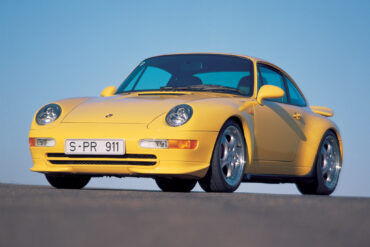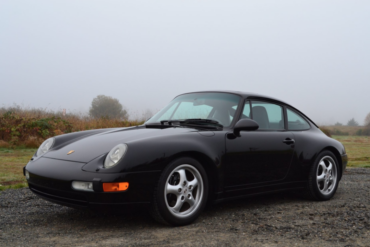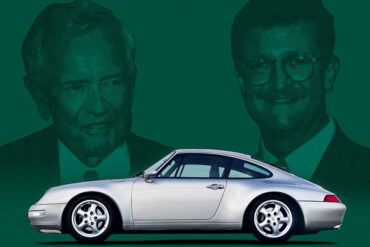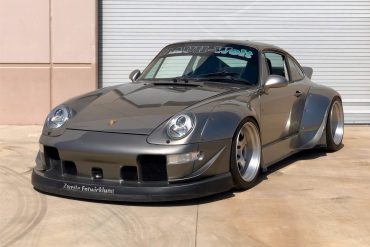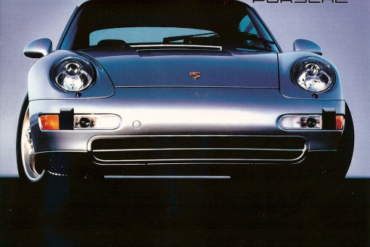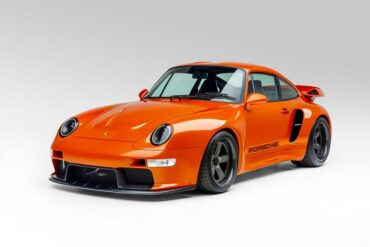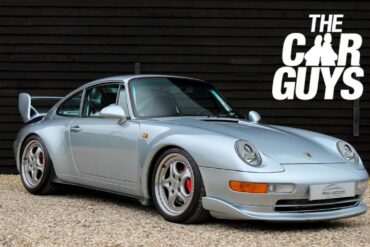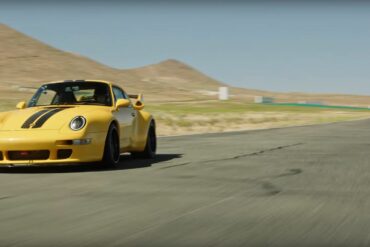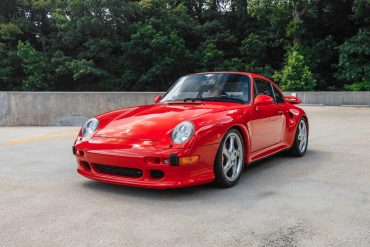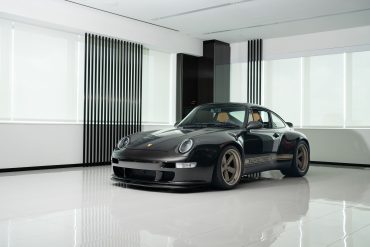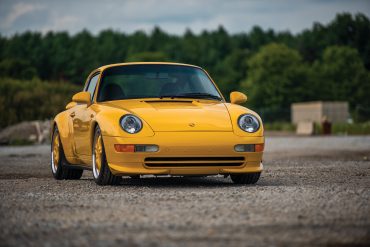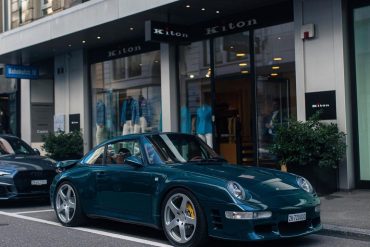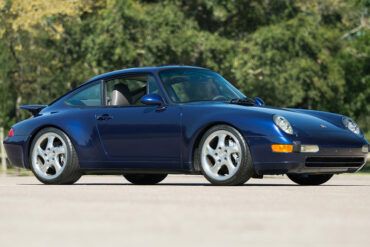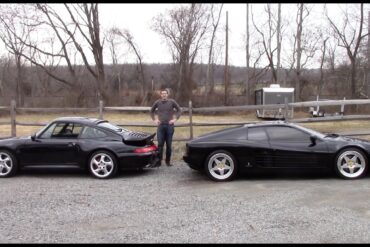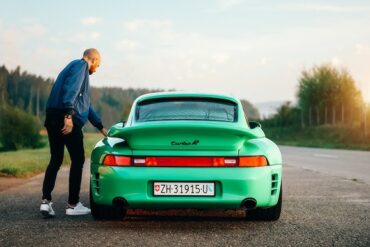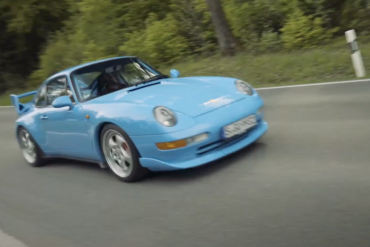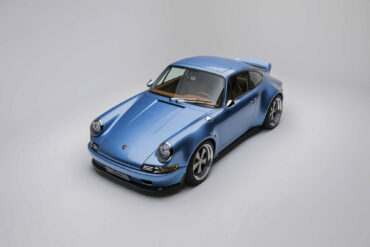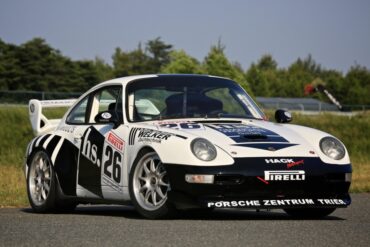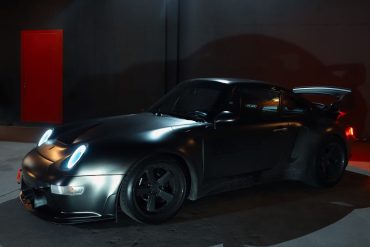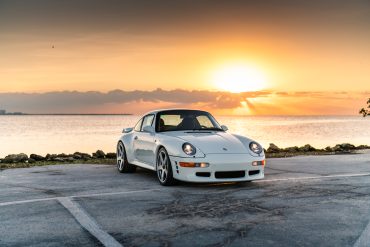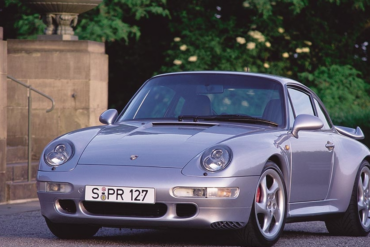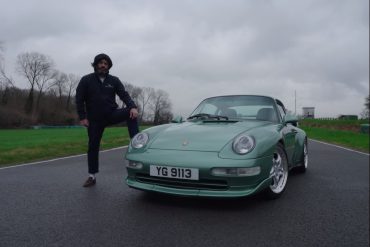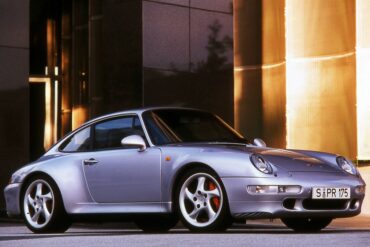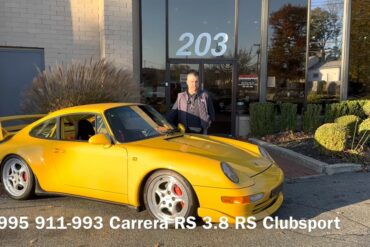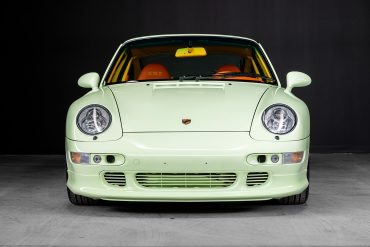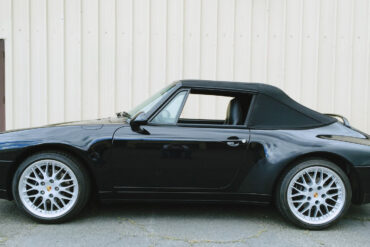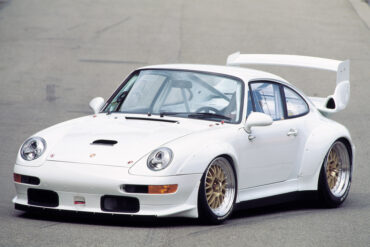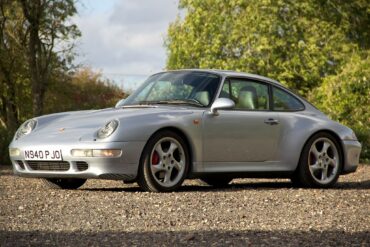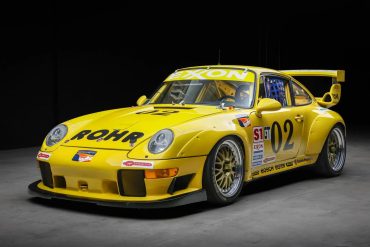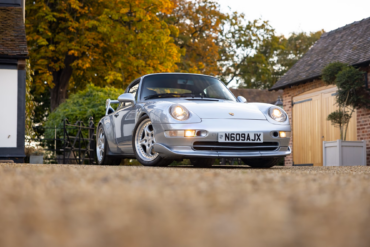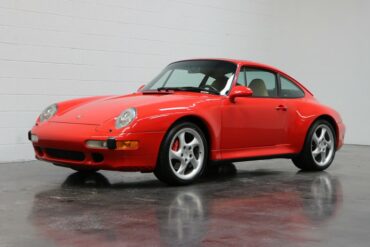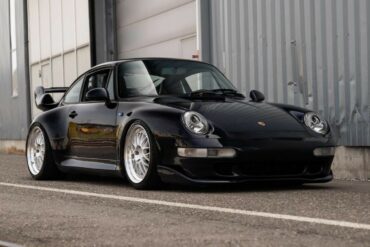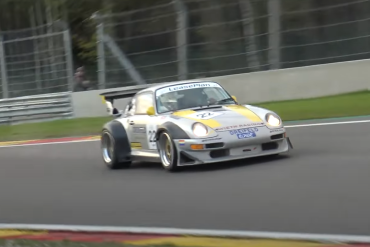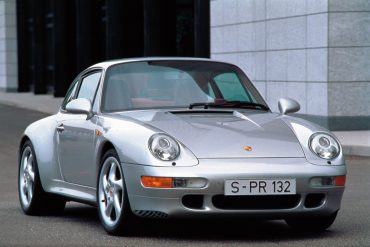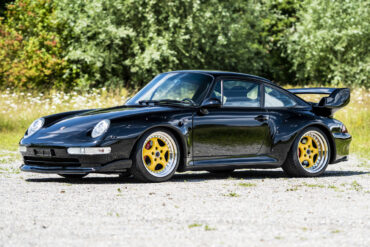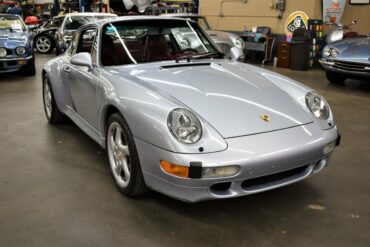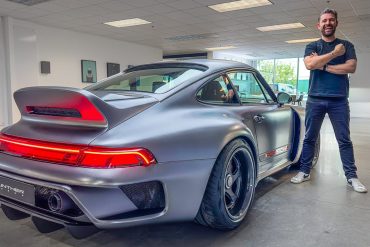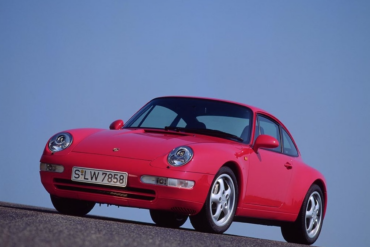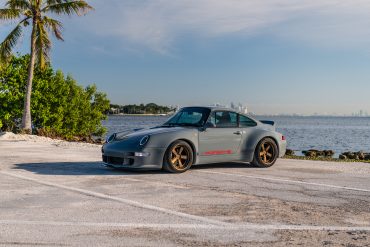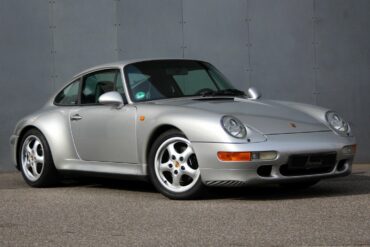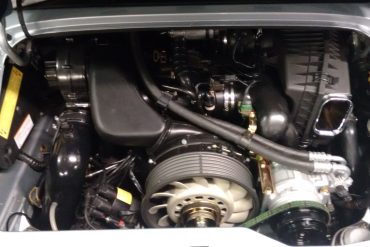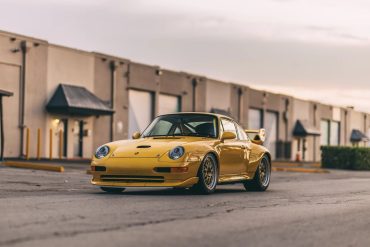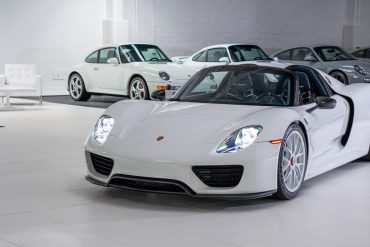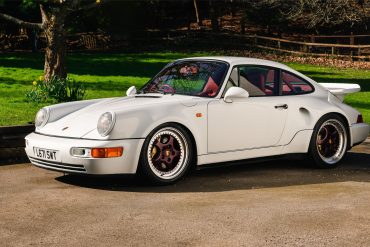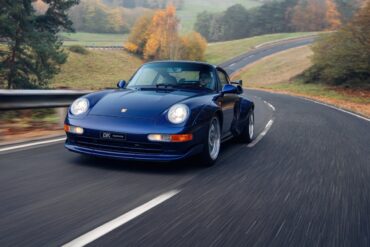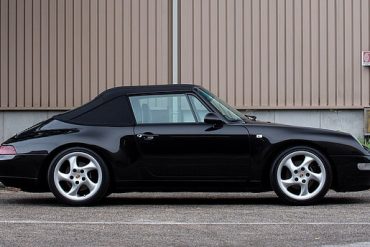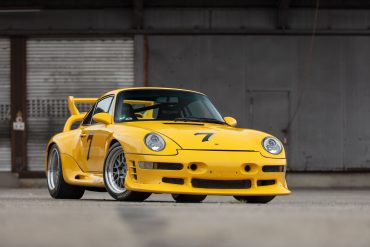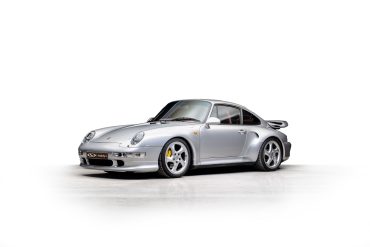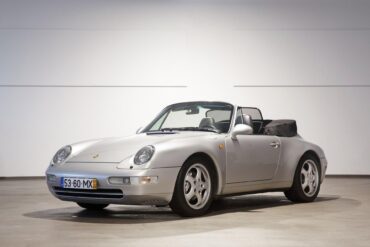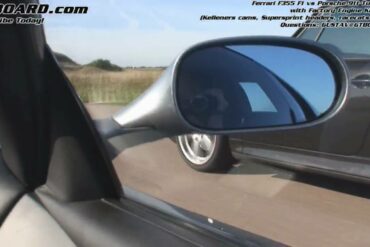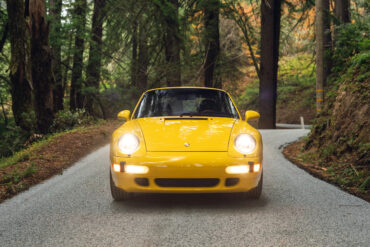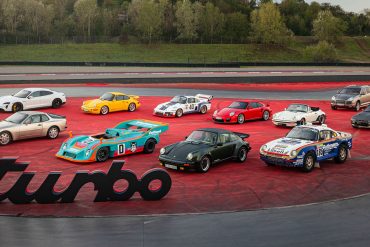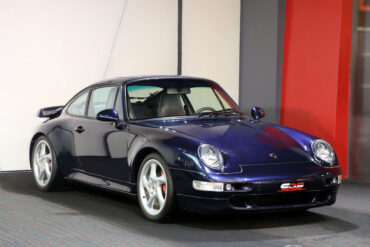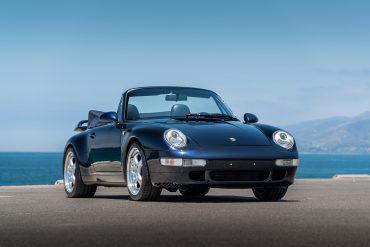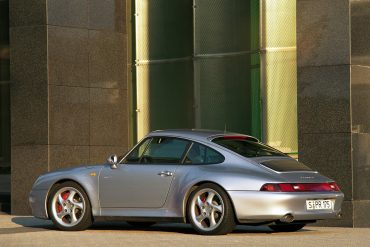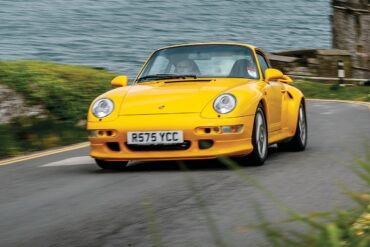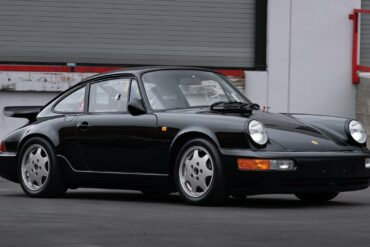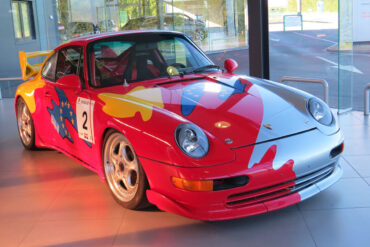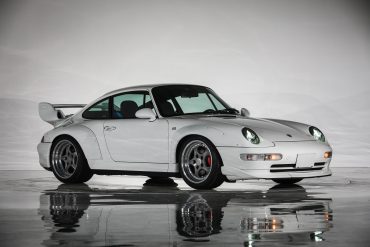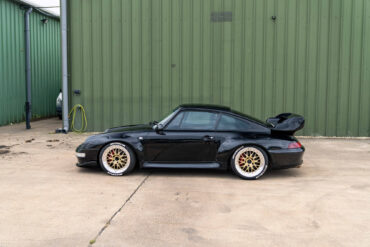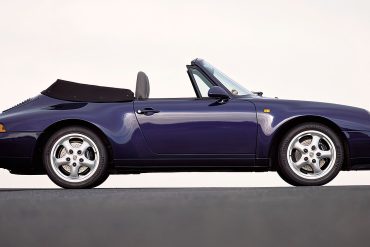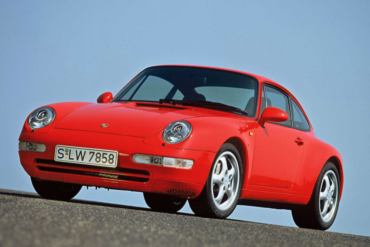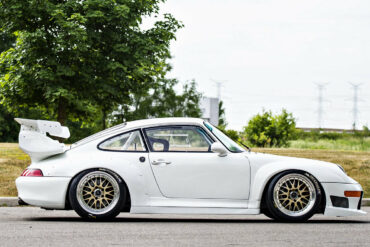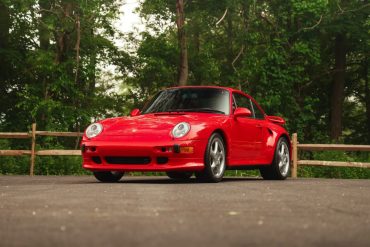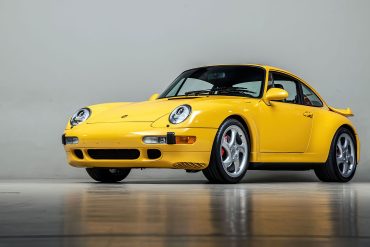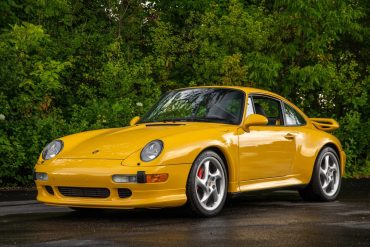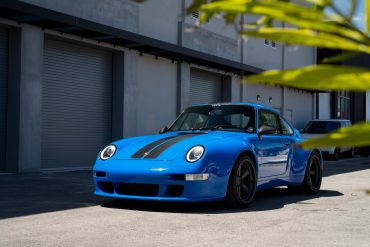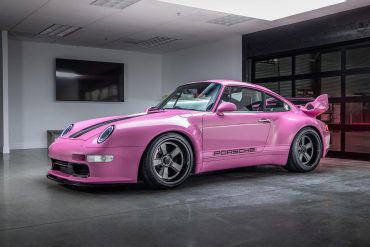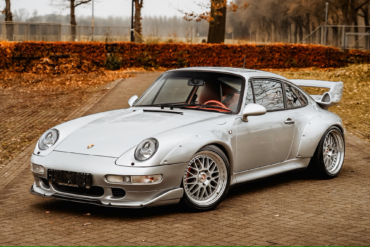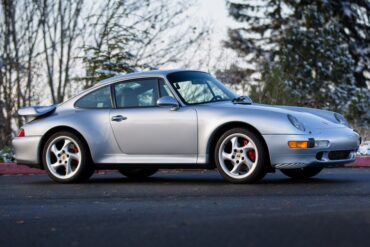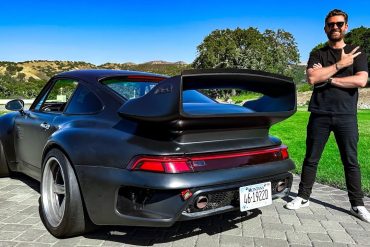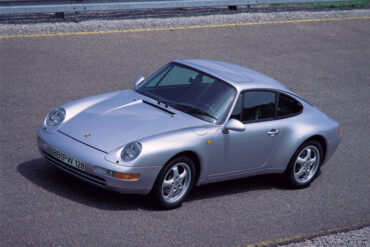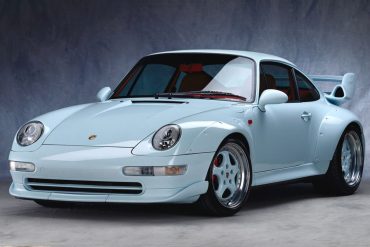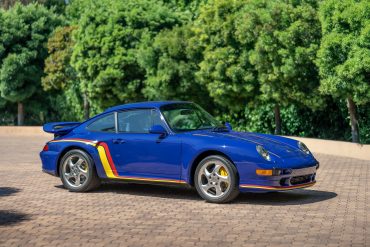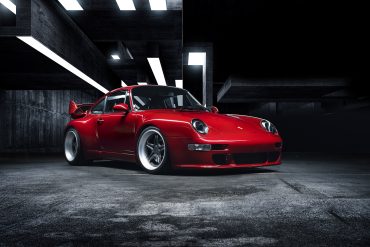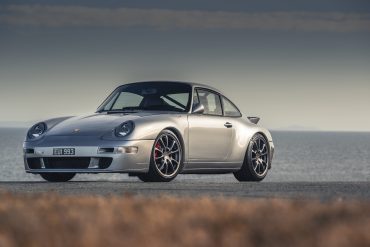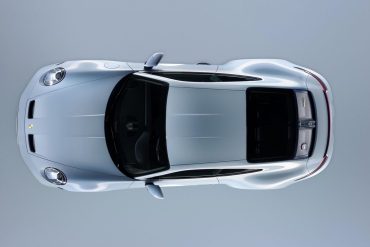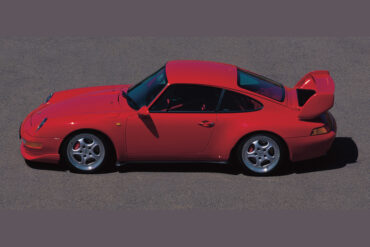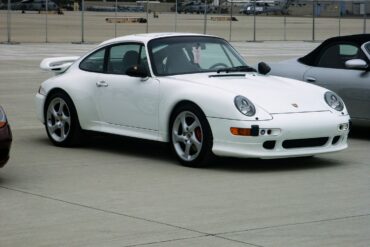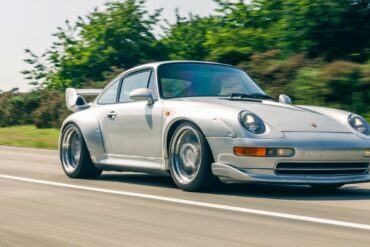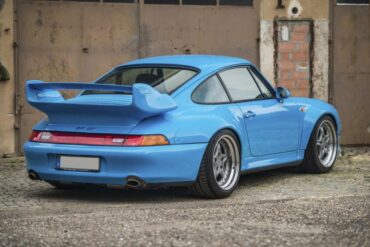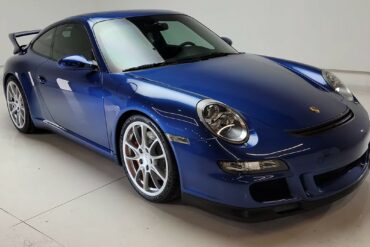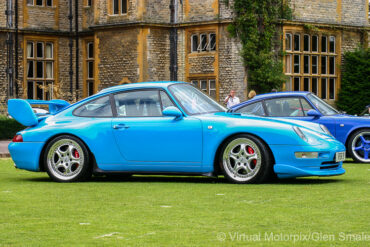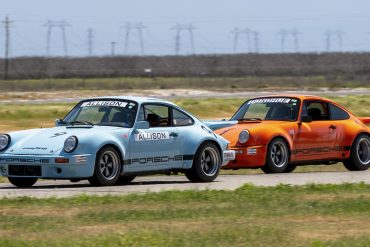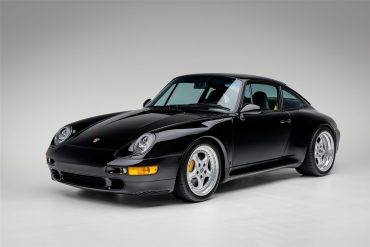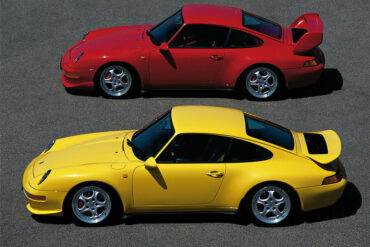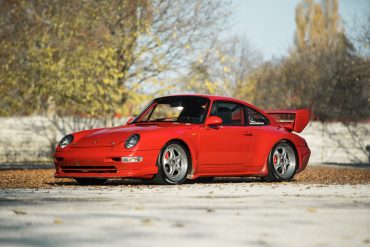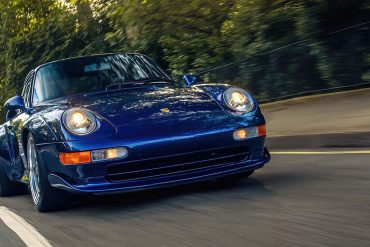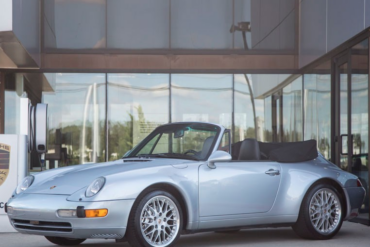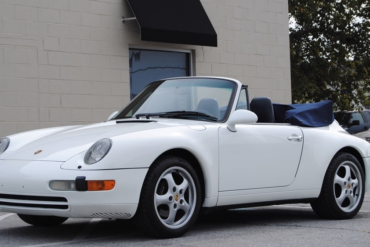The 993 Carrera RS is a lightweight, stiffer version of the naturally-aspirated 993 Carrera meant for ultimate street performance. At its heart was the 3.8-liter normally aspirated Type M64/20 engine producing 300 bhp at 6,500 rpm along with 262 foot-pounds of torque at 5,400 rpm. Looking to save as much weight as possible, every non-essential item from the car was removed. The Carrera RS tipped the scales at a 1,280 kg. About 1,000 Carrera RS were built, making it one of the rarest and most collectable 993-generation 911's produced. In addition to the Base Trim it was also available as the race-ready, street legal, RS Clubsport (option M003).
Porsche 911 (993)
In 1993 the Porsche 993 Carrera was presented to the general public as the successor for the 964. The Porsche 993 was the fourth generation of the Porsche 911 and easily the most loved iteration and the last of the aircooled Porsche 911s. It was more sophisticated and durable than the Type 964 that came before it, the significant technical advances in the underpinnings created a more civilized car and a greatly improved handling experience too. The 993 retained the 3.6 L m64/01 engine from the 964 but it was re-designated as M64/05. The 993 Porsche 911 Carrera was introduced in Coupé and Cabriolet form in 1994. The Targa version followed for the 1996 model year. A year later came the Carrera 4, again in both Coupé and Cabriolet body styles. See all of our Porsche 993 Research.
Porsche 911 (993) Technical Specifications & Model Comparison (European Variants) European specs 911 993...
PORSCHE 993 “25 YEARS” 1994–2019: by Andreas Gabriel, Manfred Hering & Thomas Nehlert © Berlin Motor Books Berlin Motor Books,...
Featured here is a 1995 Porsche 993 that has undergone the highly coveted RWB (Rauh-Welt Begriff) conversion package, resulting in...
Porsche 911 Sales Brochures (Type 993) After lots of digging and searching, we have found only two Porsche sales brochures...
Gunther Werks, the company that remasters the Porsche air-cooled 993 introduced the Project Tornado last year. It is based on...
This week Jason takes a trip down to Ashgood Classic and Sports Cars to test drive an iconic Porsche, the...
It’s no secret that when you make the same type of car for decades, you obviously learn many little tricks...
In 1997, Porsche manufactured a limited run of the 993 Turbo S, which marked the final air-cooled 911 Turbo. These...
The 993-generation 1997 Porsche 911 Remastered by Gunther Werks stands as a sports car that continues to captivate even more...
The 993 generation gave us some great Porsches. You had the 993 Turbo which was a straight line weapon and...
Ruf released the Turbo R Limited in 2016, paying homage to the original Turbo R. Only seven units were produced,...
1996 Porsche 911 Carrera 4 (993) Technical Specifications Engine Type Flat 6 Induction Naturally Aspirated Cooling Air/oil-cooled Valvetrain Single overhead...
DRIVEN: Midnight Blue Porsche 993 911 Turbo In this video, courtesy of the Porsche Club of Great Britain (Region 2)...
Head to Head – Doug DeMuro Picks His Favorite Doug DeMuro compares two 1990s icons — the Ferrari 512TR and...
Morning Run In a 993 Turbo by RUF 6am Air cooled Porsche sunrise drive to buy some coffee. Is there...
I have always been a big fan of Ben Barry and his reviews, so it was nice to stumble upon...
Kaege Restomods Based Germany, Kaege Retro had been creating 993-based cars since 2010. When Roger Kaege decided to build his...
993 Carrera Cup Champions & Results 993 Carrera Supercup 1994 Uwe Alzen Emmanuel Collard Jean-Pierre Malcher 1995 Jean-Pierre Malcher Jürgen...
Since their groundbreaking debut in 2017 with the 400R, Gunther Werks have been pushing boundaries and redefining automotive excellence. Now,...
Starting as a modest service station in Pfaffenhausen, Germany, within a mere three decades, RUF quickly evolved into a hub...
1996 Porsche 911 Turbo (993) Technical Specifications Engine Type Flat 6 Induction Twin-turbocharged Cooling Air/oil-cooled Valvetrain Single overhead camshaft Injection...
Tuthill Porsche has earned acclaim in the rally world, transforming road cars into formidable rally beasts. Notably, they collaborated with...
1996 Porsche 911 Carrera 4S (993) Technical Specifications Engine Type Flat 6 Induction Naturally Aspirated Cooling Air/oil-cooled Valvetrain Single overhead...
Featuring the Speed Yellow finished Factory Clubsport 1995 911/993 Carrera RS 3.8 Clubsport. Concours-ready, 1 of only 227 examples built,...
This 993-generation Porsche 911 Turbo S is the result when an unlimited budget accompanies extreme fantasy. There’s no other way...
1998 Porsche 911 Carrera Cabriolet (993) Technical Specifications Engine Type Flat 6 Induction Naturally Aspirated Cooling Air/oil-cooled Valvetrain Single overhead...
The Porsche 911 GT2 Evo represented the top specification ever produced for any air-cooled Porsche. Designed to compete in FIA GT1, it incorporated a twin turbocharged 3.6L flat-6 engine rated at a full 600 HP and 491 lb-ft of torque. As compared to the standard 993 GT2, Porsche widened the rear fender extensions to cover wider modular wheels and added a new front spoiler with inlets for oil and brake cooling. A second deck appeared on the already outlandish rear spoiler, which could be mounted higher in the air stream for added downforce. Approximately 11 samples were produced.
1997 Porsche 911 Carrera 4S (993) Technical Specifications Engine Type Flat 6 Induction Naturally Aspirated Cooling Air/oil-cooled Valvetrain Single overhead...
KALMAR Automotive, enhancer and restorer of bespoke sports cars and special purpose-built adventure vehicles, has delivered its first 7-97 to...
Developed by Porsche to fulfill FIA GT racing homologation requirements, the 993 GT2 was derived from the 993 Turbo. It...
The Carrera RS 3.8 is the ultimate lightweight special edition 911 variant of the 993 Carrera generation. It featured a...
1998 Porsche 911 Carrera 4 (993) Technical Specifications Engine Type Flat 6 Induction Naturally Aspirated Cooling Air/oil-cooled Valvetrain Single overhead...
This Swiss based 993 Turbo looks like it has some really nice touches. The perfect stance....
The Porsche 911 GT2 Evo represented the top specification ever produced for any air-cooled Porsche. Designed to compete in FIA...
The Porsche 911 GT2, primarily built for racing but still road-legal, has a lineage tracing back to the iconic 1973...
The Carrera S was the ultimate, naturally aspirated version of the Carrera 2. Porsche decided to offer something more to its customers when it launched the Carrera S version. It featured a stiffer and lowered suspension. Its wider tires made it better in the corners and faster around a race-track than its Carrera 2 sibling. The Carrera S took its bodywork from the Porsche Turbo. But it didn't get the turbocharger or the all-wheel-drive system. Its wider rear fenders and lowered stance than the Carrera lineup made it a desirable car for the Porsche fans. The engine was the same 3.6-liter naturally aspirated, but it was offered in the higher power output of 285 hp. The only transmission available was a 6-speed manual.
The GT2 was the hardcore, race-focused version of the 993 Turbo, using essentially the same 3.6 L twin-turbocharged engine, but slightly modified with increased power output. The car was made to compete in the FIA GT2 racing class. Among this already very exclusive circle of 57 cars there is an even more rare community. 20 of the 57 road-legal cars were produced in a second – and last – badge with upgraded engine power (450 PS) called GT2 “Clubsport” which make them the last Porsche models with air-cooled engines.
Road Test in a Porsche 911/993 4S Coupe Polar Silver metallic, Flamenco Red leather interior, Red carpeting, 3.6 Liter Flat 6-cylinder...
A couple of days ago, California-based specialist Gunther Werks revealed their latest creation, the Touring Turbo Edition Coupe, at The...
The 993 Carrera 4, sold between 1995 and 1998, uses the same powerplant as the standard 993 Carrera, but puts power down to all four wheels through a 6-speed manual transmission. A “Carrera 4” badge on the tail, along with silver-painted brake calipers and clear front and side turn signals, help distinguish the all-wheel drive C4 from the C2 sibling. Approximately 4,700 coupes and 2,500 cabriolets were made. It was replaced by the Porsche 911 Carrera 4 (996 generation) in 1999.
One of the limited run of 25 Porsche 911 models configured to the 400R standard by Gunther Werks will be...
Porsche 911 (993) Paint Color Options This post outlines all the color options for the 993 generation Porsche 911 over...
Porsche 911 (993) Engine Codes The introduction of the model 993 marked the last of the model 911 versions powered...
The demise of the FIA World Sportscar Championship in 1992 left a void in international GT racing, but the emergence...
You already read about our preview of The White Collection auction here on Stuttcars. Fifty-five Porsches, mostly in white, with...
A perfect parade of pristine Porsche 911’s is set to be a star draw at the Salon Privé Club Trophy...
Live now on DK Engineering is a one-of-one example of a 1996 Porsche 911 (993) GT2 finished in paint to...
2,500 cabriolets were made in the 993 Carrera 4. The 993 Carrera 4, sold between 1995 and 1998, uses the same powerplant as the standard 993 Carrera, but puts power down to all four wheels through a 6-speed manual transmission. A “Carrera 4” badge on the tail, along with silver-painted brake calipers and clear front and side turn signals, help distinguish the all-wheel drive C4 from the C2 sibling.
Alois Ruf, initially a Porsche tuner and modifier, achieved the status of automobile manufacturer in 1981 according to the German...
The Porsche 911 is a legendary car, and the RS trim represents the pinnacle of on-track performance. But how does...
In 1997, Porsche produced a limited factory-production run of what is the last air-cooled 911 Turbo, the 993 Turbo S....
1998 Porsche 911 Carrera 4 Cabriolet (993) Technical Specifications Engine Type Flat 6 Induction Naturally Aspirated Cooling Air/oil-cooled Valvetrain Single...
Ferrari F355 vs Porsche 911 Turbo (993) Ferrari F355 F1 vs Porsche 911 Turbo (993) with Engine Kit 430 HP...
This 1996 Porsche 993 Turbo has a Paint to Sample Ferrari Giallo (yellow) finish matched with Black Supple Leather interior....
A visit to Porsche at the Retro Classics in Stuttgart is always a journey through time. This year, the sports...
Porsche 993 VIN Numbers Below is our detailed explanation of the 993 VIN codes. Our easy to use guide should...
While the 911 Turbo Cabriolet has become a common sight since the 996 generation, the 993 Turbo Cabriolet is a...
1998 Porsche 911 Carrera 4S (993) Technical Specifications Engine Type Flat 6 Induction Naturally Aspirated Cooling Air/oil-cooled Valvetrain Single overhead...
1997 Porsche 911 Turbo S (993) Technical Specifications Engine Type Flat 6 Induction Twin-turbocharged Cooling Air/oil-cooled Valvetrain Single overhead camshaft...
Porsche 993 GT2 “Drive It Like You Stole It” Video I was invited by @9ine11 to check out his epic...
Dubbed the “Chelsea Grey Commission,” this 1996 Porsche 911 Carrera is the first of 25 units produced by Gunther Werks...
Porsche Option Codes – Porsche 911 (1996 Model Year) Looking to decode your 1996 Porsche 911 option codes? Want to...
Autocar Drives the Gunther Werks 993 And in this vid is a rather serious take on the theme. California-based Gunther...
The 993 Carrera Cup 3.8 was developed from the 993 Carrera RS, as purpose-built competition car designed by Porsche for its single-model racing series taking place around the world. Replacing the 964 Carrera Cup, the 993 Carrera Cup had a claimed 315 bhp on tap, weighed only 1,100kg, and offered a top speed of around 270km/h (170mph). Approximately 216 samples were built. The Carrera Cup should not be confused witth the Carrera RSR, or the 993 Carrera RS Clubsport version.
The 993 Porsche 911 GT2 (or GT as it was initially called) was built in order to meet homologation requirements...
Collecting Cars is currently offering an impressive 24-car collection of rare exotics by a single owner which houses several Porsches....
Introduced in 1994 the Porsche 911 Cabriolet was more of a Grand Tourismo vehicle than a sports car. The 911 Cabrio featured the same cues as its coupe version, but with a few differences apart from the lack of a fixed roof, of course. The 3.6-liter engine was offered in two versions, with 275 hp and 285 hp. The latter featured the VarioCam system. Both versions were mated to either a 6-speed manual or a 4-speed automatic.
1995 Porsche 911 Carrera (993) Technical Specifications Engine Type Flat 6 Induction Naturally Aspirated Cooling Air/oil-cooled Valvetrain Single overhead camshaft...
1996-1998 Porsche 911 GT2 EVO (993) Technical Specifications Type Racing Car Built At Germany Engine Twin turbo Flat-6 Displacement 3800...
The final air-cooled 911 Turbo from Porsche was the Type 993 Turbo S, offering a remarkable conclusion to that era....
The Porsche 911, the undisputed king of sports car evolution, has continued to be transformed since its 1963 debut. One...
The 993 Carrera 4S, available from 1995 to 1998 as a 1996 model year onward, was a unique addition to...
While many have modified the 911 over time, Gunther Werks stands apart, envisioning a scenario where Porsche continued refining the...
Gunther Werks, a California-based Porsche specialist, has unveiled an awe-inspiring restomod of the Porsche 911 (993) at the esteemed Goodwood...
This 1996 Porsche 911 (993) Turbo has been modified to resemble the iconic GT2 homologation special look that every car enthusiast...
The 993 Turbo was available between late 1995 to 1998. Powered by a twin-turbocharged 3.6 liter flat six, it was rated at 402-horsepower. It’s distinguished easily from the rear, as the whale-tail spoiler is quite deep to house the intercoolers meant to cool the intake charge. This extra power might have been a handful for street drivers, so all-wheel drive from the 993 Carrera 4 added traction at all four corners. Approximately 6,000 coupes were made. Although powered by a different engine, a limited production 993 Turbo Cabriolet was available in the early days of the 993 generation. A more powerful 993 Turbo S was also introduced in 1997.
At the Monterey Car Week 2023, California-based specialist Gunther Werks revealed their latest creation, the Touring Turbo Edition Coupe. This...
Porsche Option Codes – Porsche 911 Type 993 (1994 Model Year) Looking to decode your 1994 Porsche 911 option codes?...
This bespoke Porsche 993 is no stranger to the Porsche world, though very few people are likely to have ever...
In 1997, Porsche introduced the 993 Turbo S, a limited-production model that served as a magnificent farewell to the era...
The Gunther Werks 400R is a modern version of Porsche’s last air-cooled 911 and is the first car from the...
Paul Stephens’ latest Autoart customer only gave him one directive, “Take a 993 and make a 25 per cent improvement...
In the beginning… The engine of the Porsche 911 has come a long way over the past 60 years, now...
The 993 Carrera RS Clubsport, 213 of which were built to meet the FIA GT2 homologation requirements, is a race-ready, although street legal variant of the 993 Carrera RS, not to be confused with the track only 993 Carrera Cup RSR. Emphasizing its competition credentials, the 993 Carrera RS Clubsport came with a welded-in roll cage as standard, considerably increasing its rigidity, racing bucket seats, six-point safety harnesses, battery isolator switch, fire extinguisher, and a huge fixed rear wing, the latter also available on the 'base model' Carrera RS.
1994-1998 Porsche 911 (993) Carrera, Carrera S, Carrera 4, Carrera 4S, Turbo Service Schedule This maintenance service schedule checklist is...
Ultimate Air-Cooled 911 – Porsche 993 GT2 Among Porsche connoisseurs, there is one modern 911 that stands out as the...
In 1993, Porsche introduced the Type 993, considered by many as the most beautiful 911. After years of aerodynamic and...
Ruf’s follow-up to the iconic “Yellowbird” debuted in 1995, based on the new 993 Turbo chassis. Maintaining the original’s themes...
1995 – 1996 Porsche 911 GT2 (993) Technical Specifications Type Racing Car Built At Germany Engine Flat-6 Position Rear Longitudinal...
Watch this Cobalt Blue Porsche 997 GT3 get the love and care it deserves as it is given some interior...
It is forty years since the introduction of Porsche’s first RS, the mighty Carrera RS 2.7, back in 1973. For...
911 Owner Stories: Dan and his 993 Carrera 4S At a young age, Dan Brunn moved from Tel Aviv to...
The 15th Targa California rally recently concluded with most drivers logging 1,000+ miles over the roads “less traveled” of California’s...
This 1997 Porsche 993 Carrera S finished in sleek Black with a black leather interior, underwent an extensive custom rebuild spanning...
1995-1996 Porsche 911 Carrera RS 3.8 (993) Technical Specifications Model Porsche 911 Carrera RS 3.8 (993) Model Years 1995 and...
The Carrera RS Clubsport, a track-oriented variant of the Carrera RS, prioritized performance over road comfort. Featuring a fully welded...
Homologation yields street missile In response to the emergence of the BPR Global GT Endurance Series and other racing series...
1996 Porsche 911 Carrera 4 Cabriolet (993) Technical Specifications Engine Type Flat 6 Induction Naturally Aspirated Cooling Air/oil-cooled Valvetrain Single...
1995 Porsche 911 Carrera Cabriolet (993) Technical Specifications Engine Type Flat 6 Induction Naturally Aspirated Cooling Air/oil-cooled Valvetrain Single overhead...


